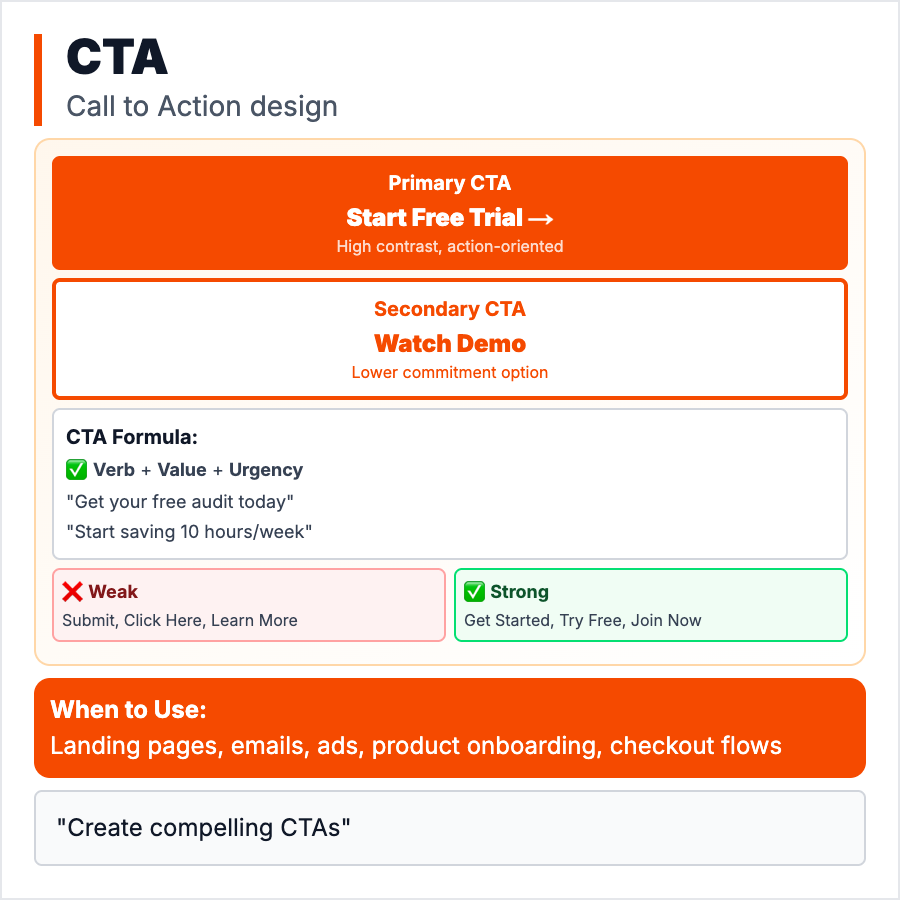
What is CTA (Call to Action)?
A Call to Action (CTA) is the specific instruction you give someone to take the next step—like "Start Free Trial," "Book a Demo," or "Download Guide." It's the bridge between interest and action. Good CTAs are clear, specific, and create urgency. Bad CTAs are vague ("Learn More") or create friction ("Request Information").
When Should You Use This?
Use CTAs everywhere you want user action: landing pages, emails, blog posts, pricing pages, signup flows. Every page should have one primary CTA (what you most want them to do) and optionally secondary CTAs (alternatives). The key is making the desired action obvious and low-friction.
Common Mistakes to Avoid
- •Using vague CTAs like "Learn More" or "Submit"—be specific about what happens next
- •Too many CTAs competing on one page—have one primary action
- •Creating friction—"Request a Quote" sounds like work, "See Pricing" is instant
- •No urgency—"Start Free Trial" vs "Start 14-Day Free Trial (No Credit Card)"
- •Hiding CTAs below the fold or in subtle text
Real-World Examples
- •SaaS landing page: "Start Free Trial" (primary) + "Book Demo" (secondary for enterprise)
- •Blog post: "Download Free Template" (lead magnet CTA)
- •Pricing page: "Get Started" (instead of vague "Sign Up")
- •Cold email: "Worth a 15min call?" (low-commitment, specific)
Category
Marketing
Tags
conversioncopywritinglanding pageux